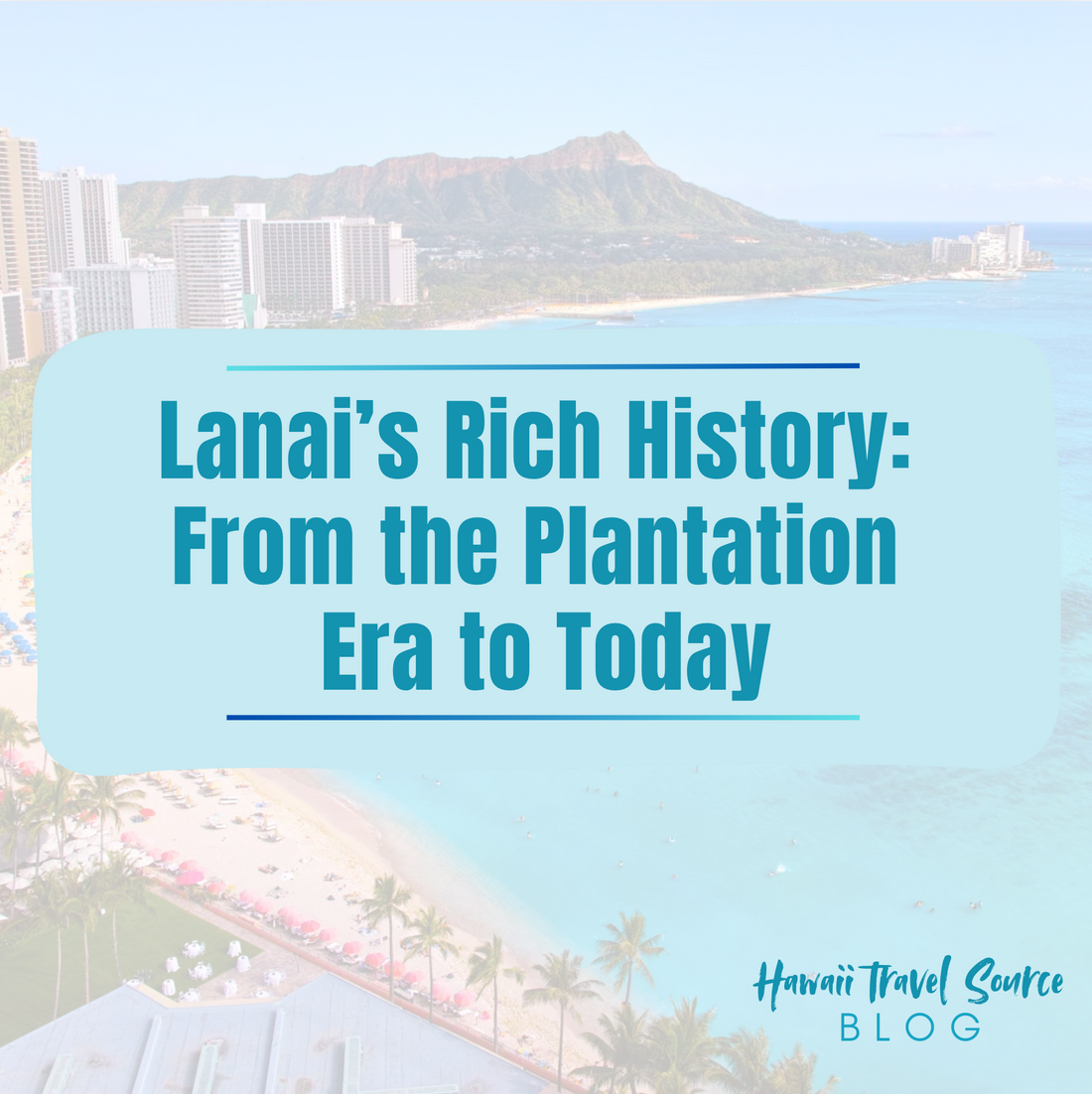
Lanai’s Rich History: From the Plantation Era to Today
Share
Nestled in the heart of the Hawaiian Islands, Lanai is a small but historically rich island with a unique past. While today it is known for its luxurious resorts and pristine beaches, the island’s history is steeped in agriculture, plantation life, and the preservation of its cultural heritage. From its days as a pineapple powerhouse to its modern-day status as a tranquil getaway, Lanai has a story worth telling.
The Early Years: Before the Plantation Era
Before Western contact, Lanai was sparsely populated, with native Hawaiians using the land for farming, fishing, and gathering. The island was home to several Hawaiian chiefs and was primarily used for subsistence living. Its natural resources provided the essentials of daily life, and the rugged landscape helped keep the island relatively isolated.
Lanai's early history was shaped by the Hawaiian Kingdom, which saw the island change hands multiple times before it became part of the Kingdom of Hawaii in the 19th century. However, it wasn’t until the arrival of Westerners that the island’s agricultural potential would be realized.
The Plantation Era: Lanai as the "Pineapple Isle"
In the early 1900s, the island underwent a dramatic transformation when it was purchased by James Dole, the founder of the Hawaiian Pineapple Company (later known as Dole Food Company). Dole recognized the island’s ideal growing conditions for pineapples, and thus began the era that would define Lanai for much of the 20th century.
The land was cleared for pineapple fields, and the island’s population grew as workers from across Hawaii, the mainland, and even abroad were brought in to manage the plantations. In fact, at its peak, Lanai was the largest pineapple producer in the world. This marked a period of intense development, with a company town, Lanai City, being established to house workers and their families. The community thrived as the pineapple industry flourished, and Lanai became known as the “Pineapple Isle.”
The island's economy revolved around the pineapple industry, with most of the island’s inhabitants working in the fields or in related industries. Lanai City, a small but bustling town, was the heart of the plantation’s operation. Here, residents could find the essentials, including a post office, school, and grocery stores. The town, with its plantation-style architecture, still retains much of its charm today.
Decline of the Pineapple Industry
By the 1980s, however, the pineapple industry was on the decline, due in part to rising labor costs and the increasing competition from cheaper sources abroad. In 1985, Dole ceased pineapple production on the island, marking the end of an era. Lanai, which had once depended entirely on the pineapple industry, was now left to grapple with the loss of its primary economic driver.
During this period, much of the island’s land was sold off, and Lanai’s future became uncertain. The population shrank, and many businesses shut down. The transition was difficult, as the island’s residents had grown accustomed to the reliable work and community that the pineapple industry had provided.
Modern-Day Lanai: A Paradise for Visitors
In 1992, the island’s fate took a new turn when businessman Larry Ellison, co-founder of Oracle Corporation, purchased Lanai. His vision for the island was to transform it into an eco-friendly luxury destination while maintaining its deep-rooted connection to history and Hawaiian culture.
Under Ellison's ownership, significant investments were made in infrastructure, luxury resorts, and sustainable tourism. The Four Seasons Resort Lanai, which opened in 1993, became one of the most well-known luxury accommodations on the island. The development of eco-tourism initiatives and the focus on environmental sustainability has helped Lanai become a sought-after destination for visitors looking for a more relaxed and authentic Hawaiian experience.
Despite its transformation into a luxurious retreat, Lanai has retained much of its historical charm. Lanai City, with its plantation-era architecture, still serves as the heart of the island, and many of the local businesses continue to pay homage to the island’s agricultural roots. Additionally, efforts have been made to preserve the natural beauty and cultural traditions of the island, ensuring that Lanai’s history is not lost in its modern-day reinvention.
Cultural and Historical Preservation Today
Today, Lanai is a blend of old and new. The island’s rich heritage is celebrated through local events, museums, and cultural sites. The Lanai Culture & Heritage Center, for example, provides insight into the island’s history, from its early Hawaiian inhabitants to the days of the pineapple plantations. Visitors can explore exhibits that showcase the island’s unique cultural traditions, agricultural past, and the people who have called Lanai home over the centuries.
In addition to historical sites, the island’s residents continue to honor their Hawaiian heritage through traditional practices such as hula dancing, music, and the art of lei making. These cultural practices are not just a reminder of the past but also an integral part of Lanai’s present identity.
Lastly...
Lanai’s history is one of transformation and resilience. From its origins as a peaceful Hawaiian retreat to its industrial boom as the pineapple capital of the world, and finally, to its rebirth as a luxurious and sustainable destination, the island has navigated many changes. Yet, through it all, Lanai has managed to preserve its rich cultural heritage and its connection to the land.
Today, visitors to Lanai can still experience echoes of its past, whether through the historic streets of Lanai City, the pineapple fields that once dotted the island, or the stories shared by locals who remember the days when the island was ruled by the pineapple industry. As Lanai continues to evolve, its past remains an essential part of its identity—a history that shapes not only the island’s present but also its future.
